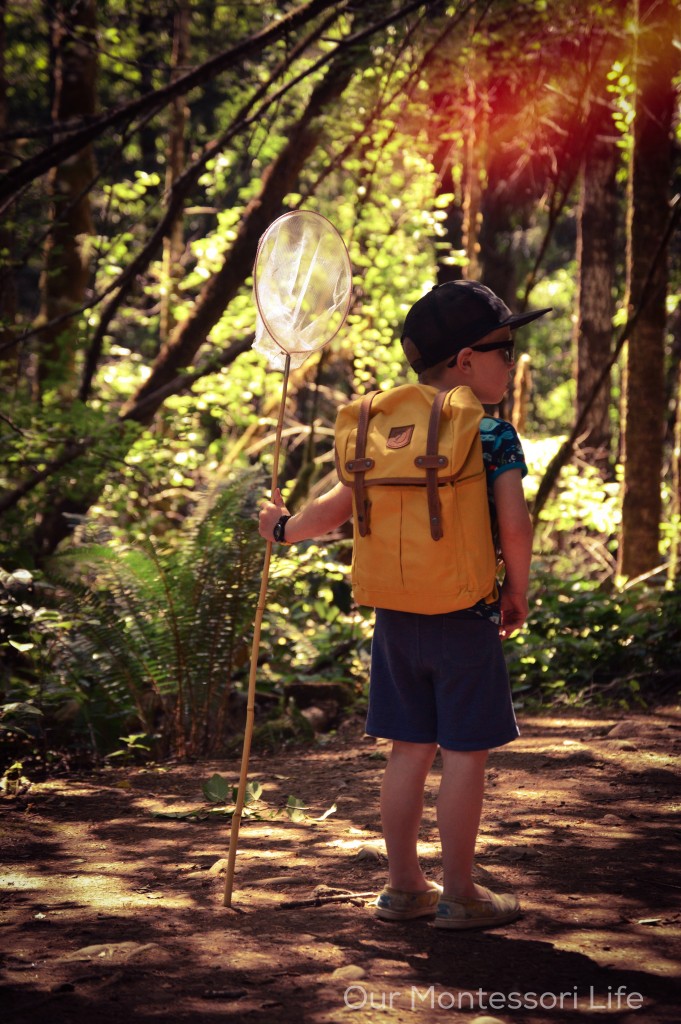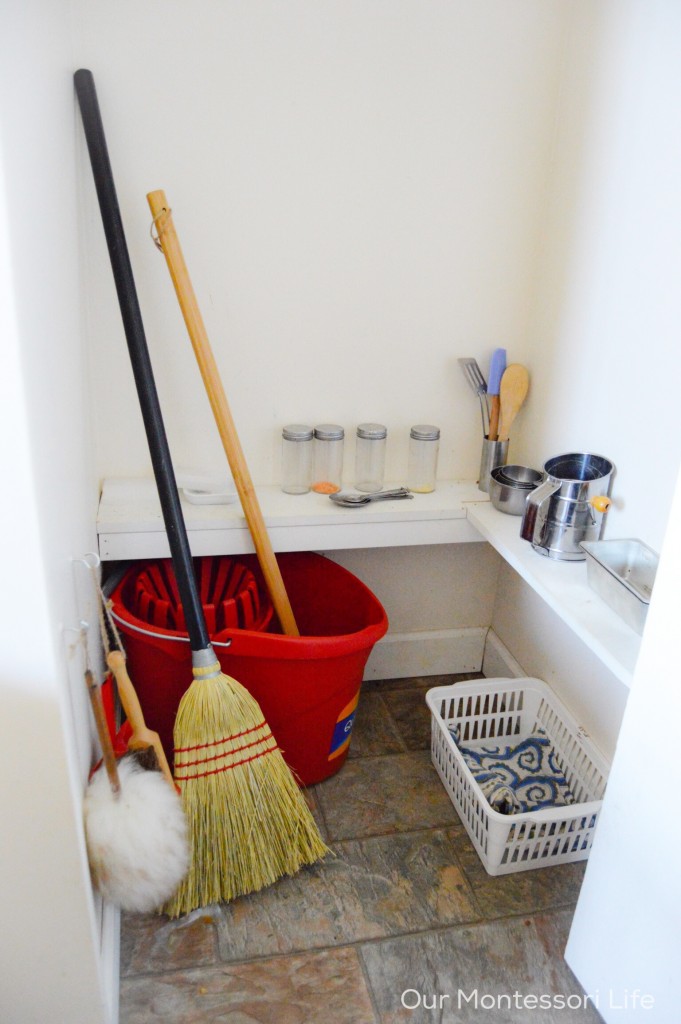SUMMER SERIES: Montessori home tour #3 – a peek inside Our Montessori Life’s home in Canada
The summer of Montessori home tours continues! This time we are off to Canada.
“Our absolute favourite thing to do is to be in nature with our boys introducing them to all the natural world has to offer. So much natural learning happens when outside.” – Beth
Beth is a Montessori teacher for 3-6 year olds and has two boys, Anthony and Quentin. I love following Beth’s blog, Our Montessori Life, as well as here on Instagram, to see the adventures they get up to. If you haven’t already, don’t miss this post on a minimalist lifestyle with kids and some thoughtful gift suggestions here.
Today we will get to see their home and some of their beautiful authentic Montessori activities in action.


1. How did you find out about Montessori?
We are lucky enough to live in an area where there are lots of Montessori schools, one that goes right from the Children’s House 3-6 class up to High school. 14 years ago we had no prior knowledge of Montessori when we went for a tour at that Montessori school for our oldest to begin preschool. He had just turned 3 years old. We quickly fell in love with the Montessori classroom and then over time the entire pedagogy.
We fully introduced “Montessori at home” when our second child was born 2 months prematurely. We once again looked for a way to help our child meet his needs, on a holistic, individual level. Of course Montessori was the perfect and gentle answer.


2. What do you find resonates most with you about the Montessori approach?
Montessori is based on scientific findings in the paediatric social and neurological world. It is a customized approach to learning that uses developmentally sequenced materials.
100 years after it was first used by Maria Montessori, modern research is confirming her findings. Above all, Montessori has at its centre Peace Education. It is a pedagogy that has at its foundation the teaching of peace for the next generations. No other pedagogy or learning system has this. It’s why I love Montessori so much.


3. What is currently your favourite thing to do at home with your children?
Our absolute favourite thing to do is to be in nature with our boys introducing them to all the natural world has to offer. So much natural learning happens when outside.

Montessori at home is regrettably badly portrayed to the world through the internet and social media. It is suggested that Montessori is about expensive materials, neatly prepared trays or pushing academics on toddlers.
Instead we try to show that Montessori either in the formal Montessori classroom or at home is about letting a child lead and involving a child in the everyday world of the home or classroom. Offering a richly beautiful environment is all children need to learn.

4. Where do you hunt for Montessori style materials and furniture?
We choose to buy well made, eco-friendly, ethically responsible materials whenever possible. Whenever we can, we shop small shops. However, we also buy from Montessori Services, and Amazon. Our Montessori Child’s Kitchen is from IKEA.


5. What’s one tip you would give to other parents wanting to set up their home Montessori-style?
There is a lot of misinformation out there. You actually need very little to set up a Montessori home. Our number one advice when consulting with new families is skip the bloggers peddling affiliate links and Pinterest. Montessori at home is about honouring and respecting the child. Can your child make their own food? Can they get their own clothes out of the closet? Do they have access to water or do you have to get them a drink?
Most importantly, how do you speak to your children and the other members of your family? If you have a cube shelf full of pretty trays, but yell at your kids or your partner, you aren’t doing Montessori.

Bonus question – I see you use a tipi in the bedroom to provide a cosy place to rest. What is your view of appreciation vs appropriation?
Tipis are stereotypically and incorrectly only associated with all native peoples of North America. It is only the Plains tribes that use this building style in North America. There are many other indigenous peoples that used this portable tent in both Europe and Asia. Both my husband and I have Arctic European heritage so I guess I could honestly say that the tipi we have, is displaying our own culture. Or simply as you say it’s a comfortable little rest area.
Honestly though I feel the whole subject is one big grey area. Living in a very young part of the world (Canada is only celebrating 150 years as a nation and our part where we live is even younger) we are submersed every day in Coastal First Nations culture. Our own community has a a population majority of Coastal Salish First Nation peoples and our boys experience all that amazing culture first hand. In our public schools, First Nations specific curriculum is mandatorily taught as part of the Truth and Reconciliation Board recommendations.
We absolutely don’t condone culture appropriation as a means of financial gain through the selling of products either for big business or small businesses. However many homes and businesses here (most actually) have First Nations Art in them. We attend community First Nations cultural festivals. Is that appreciation or appropriation? Such a grey area.
From a Montessori perspective we look at it in this way. As Quentin is still in the First Plane (but transitioning) our focus has been on cultural exposure (in a very limited and concrete way) as part of our Peace Education lessons not only at home but at my school. This includes the local culture as I have discussed above, a broad culture examination of our closest friends that live in other places in the world (Australia, Europe and Africa) and finally our own family heritage.

Thank you so much Beth for welcoming us into your home. As you can see Beth has a very thoughtful approach to Montessori in their daily life and peace education. She is also open to continue the conversation, particularly about cultural sensitivity.
Beth shares relevant Montessori and paediatric social neurological research articles from around the world on her Facebook page here. Her Pinterest page here is where she posts all of their authentic Montessori at home ideas, as well as classroom samples, book selections and ideas for healthy, waste free/eco-friendly school lunches.
If you enjoyed this home tour, you can find more here:
* Austria
* Mongolia
* London
* mid-west of the US
* Poland
* Norway
And I’ll be back soon with more of the summer of Montessori home tours very soon. Watch this space…

Simone Davies has more than 20 years’ experience as an AMI Montessori educator. Simone is the author of “The Montessori Toddler” and co-author of “The Montessori Baby” and “The Montessori Child” books, comprehensive guides to raising children in a Montessori way. She currently runs parent-child Montessori classes in Amsterdam at her school Jacaranda Tree Montessori. She also has a popular blog, instagram and podcast “The Montessori Notebook” and is mother to two young adults.